French pastries are renowned for their delicate flavors and elegant presentation. While they may seem daunting to recreate at home, there are ways to enjoy these bakery-level delights without the stress. This guide will introduce you to 18 exquisite French pastries that can be made with ease, bringing a taste of France to your kitchen.
Croissant
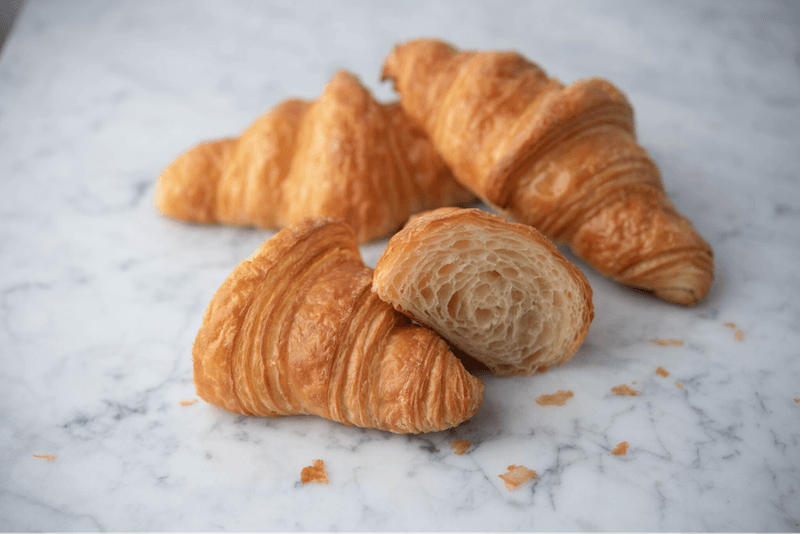
Imagine waking up to the smell of freshly baked croissants. These buttery, flaky delights are iconic in French cuisine. Though they may seem complex, with some patience, you can achieve bakery-level results. Begin by mastering the art of folding dough, creating layers that puff up beautifully when baked. Did you know that the croissant’s origins trace back to Austria? Over time, it has become a staple of French breakfast tables, symbolizing warmth and indulgence.
Éclair
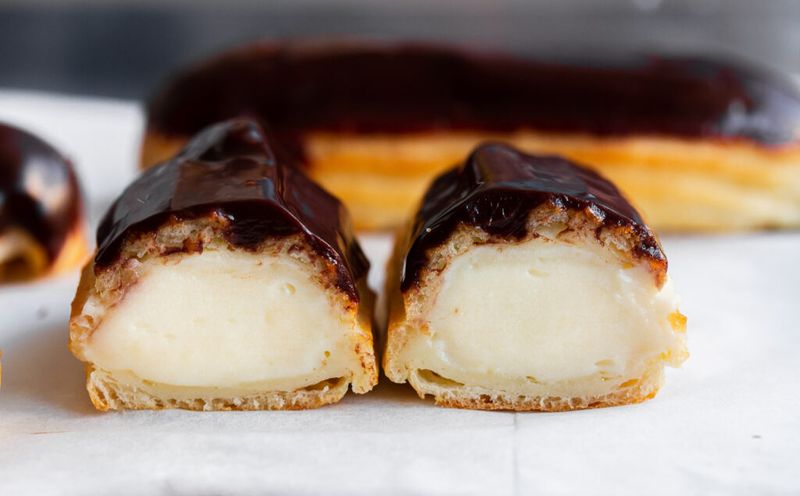
The éclair, a delightful oblong pastry, is filled with rich creams and topped with a shiny glaze. Often associated with elegant tea parties, this treat is simpler to create than it looks. The secret lies in mastering the pâte à choux, the same dough used for cream puffs. Once you achieve the right consistency, the rest is a breeze. Interestingly, the word éclair means ‘flash of lightning’ in French, perhaps reflecting the speed at which these pastries disappear!
Madeleine
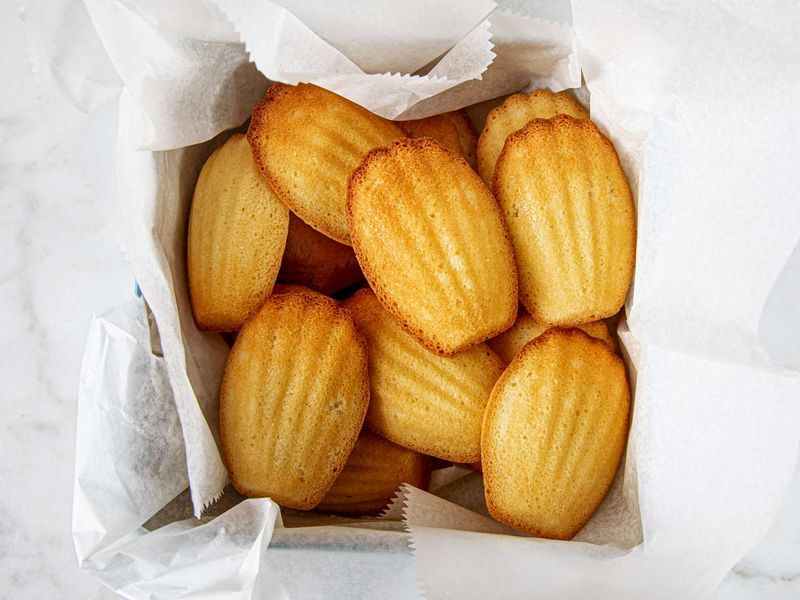
These petite, shell-shaped cakes are the epitome of French tea-time elegance. Madeleines are known for their soft, buttery texture and subtle lemony flavor. The key is to chill the batter before baking, which creates their signature hump. Marcel Proust famously immortalized the madeleine in his writing, associating them with involuntary memory. Enjoying a madeleine is like taking a sweet journey through time.
Macaron
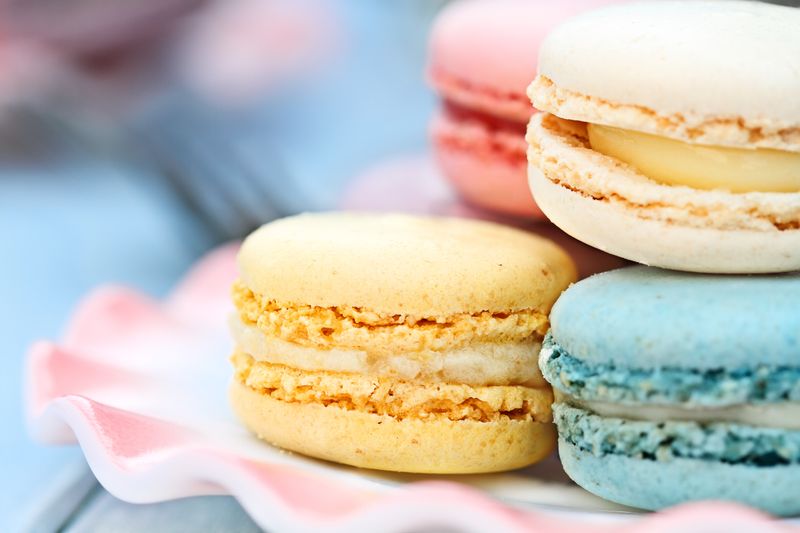
With their vibrant hues and delicate texture, macarons are as pleasing to the eye as they are to the palate. These almond-based cookies require precision and a gentle hand. Pair them with creative fillings like raspberry, chocolate, or pistachio. The macaron’s history is as colorful as its appearance, with roots tracing back to the 16th century. Today, they stand as a symbol of French patisserie artistry and innovation.
Tarte Tatin

This upside-down caramelized apple tart offers a symphony of flavors and textures. The key is to gently caramelize the apples and achieve a golden crust. Legend has it that the Tarte Tatin was created by accident by the Tatin sisters. They turned a kitchen mishap into a culinary masterpiece. Serve it warm, with a scoop of vanilla ice cream, for a taste that’s both rustic and refined.
Palmier
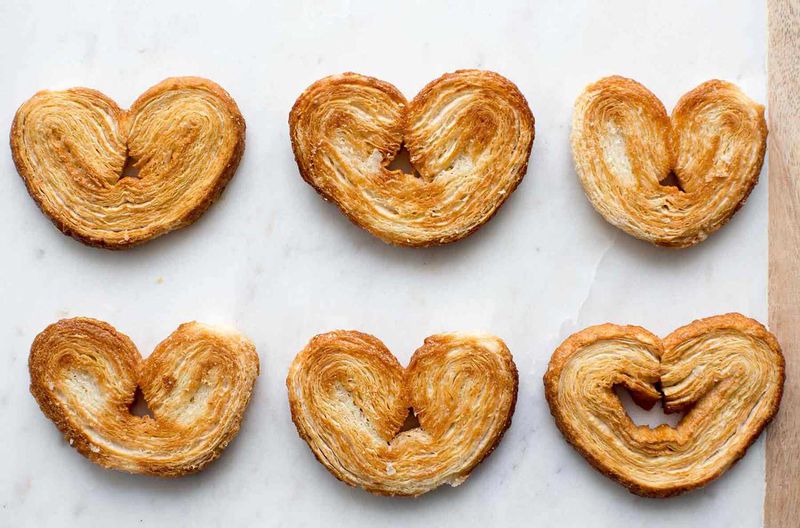
Also known as ‘elephant ears,’ palmiers are a delightful combination of buttery pastry and sweet caramelized sugar. They are surprisingly easy to make, requiring just puff pastry and sugar. Shape them into hearts or spirals, and bake to a crisp perfection. These pastries are perfect for a quick treat or a charming addition to a dessert platter. Palmiers are a testament to the magic of simplicity in baking.
Canelé
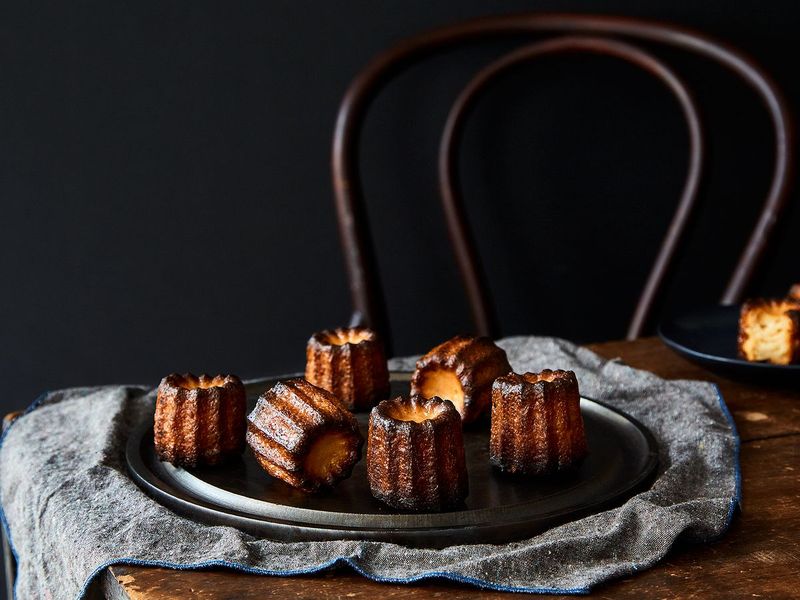
Hailing from Bordeaux, the canelé is a small cake with a rich, custardy interior and a dark, caramelized crust. The secret to a perfect canelé lies in using copper molds and beeswax, which help achieve that iconic crust. The batter is infused with vanilla and rum, offering a flavor profile that’s both simple and sophisticated. Enjoy them with a cup of coffee or a glass of wine, and savor the taste of French tradition.
Financier
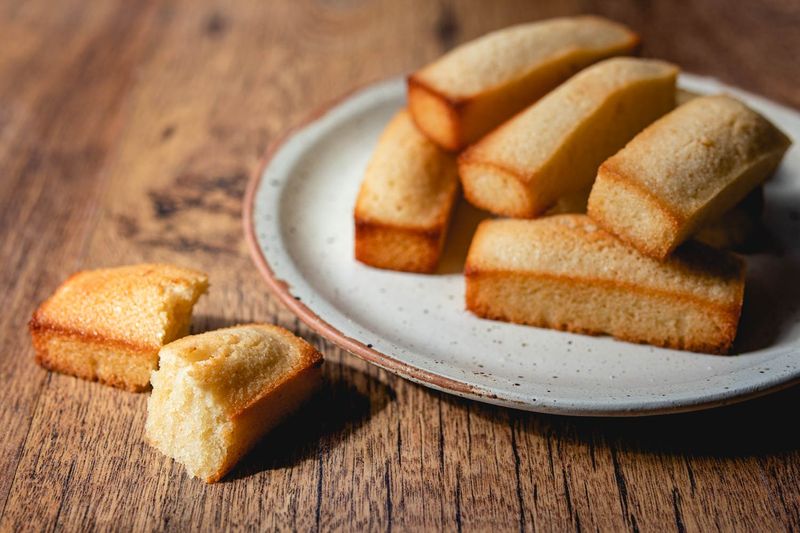
Named for their resemblance to gold bars, financiers are small almond cakes with a delightful nutty aroma. They are simple to prepare, with browned butter adding depth and richness. These pastries are perfect for a sophisticated afternoon snack or a petite sweet treat. The financier’s history is linked to the financial district in Paris, where they were a favorite among bankers. Their compact size and exquisite flavor make them timelessly appealing.
Paris-Brest
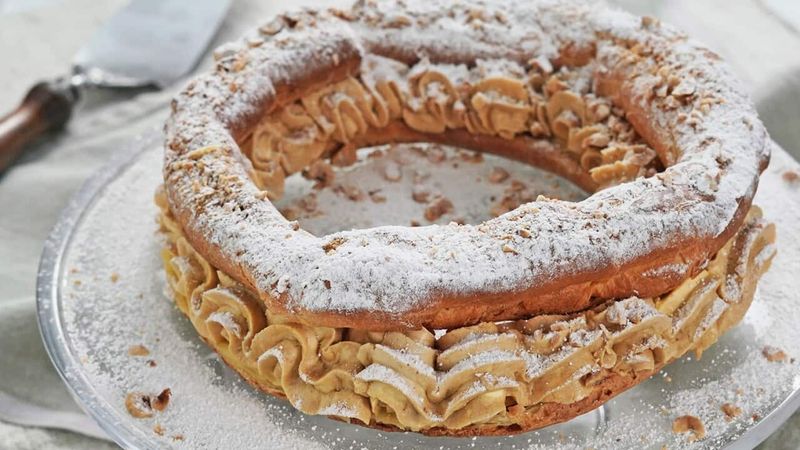
Created to commemorate the Paris-Brest-Paris bicycle race, this pastry is shaped like a wheel and filled with luscious praline cream. The choux pastry base is adorned with flaked almonds and powdered sugar, offering a delightful crunch. Its unique shape and rich filling make it a showstopper at any dessert table. The Paris-Brest is not just a treat for the taste buds but also a piece of culinary history, celebrating French innovation and sport.
Clafoutis

Clafoutis is a rustic dessert that hails from the Limousin region of France. It’s a baked custard-like dish studded with fresh fruit, traditionally cherries. The batter is akin to pancake batter, lending a light and airy texture. Its simplicity is its charm, allowing the flavors of the fruit to shine. Serve clafoutis warm, with a dollop of cream, and enjoy the comfort of a classic French countryside dessert.
Galette des Rois

Traditionally enjoyed during Epiphany, the Galette des Rois is a flaky pastry filled with almond cream, known as frangipane. Hidden inside is a fève, a small trinket, and whoever finds it is crowned king or queen for the day. This pastry combines cultural tradition with culinary delight, making it a joyful celebration. The galette’s golden crust and rich filling make it a regal treat for any occasion, extending beyond its festive origins.
Mille-Feuille
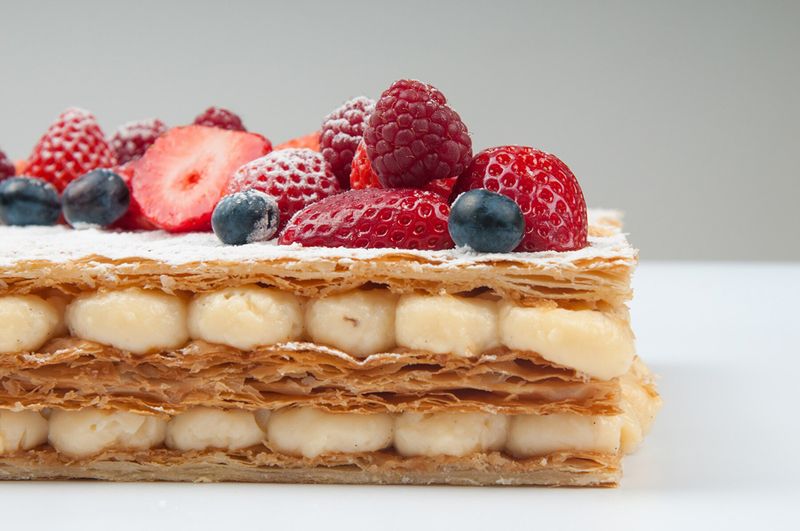
Also known as the ‘Napoleon,’ the Mille-Feuille is a masterpiece of layered puff pastry and cream. Each bite offers a symphony of textures, from the flaky pastry to the creamy filling. Precision is key in achieving the perfect layer balance. Though intricate, the Mille-Feuille can be simplified for home baking. Its elegance and sophistication have made it a timeless favorite in patisseries worldwide, embodying the art of French baking.
Choux à la Crème
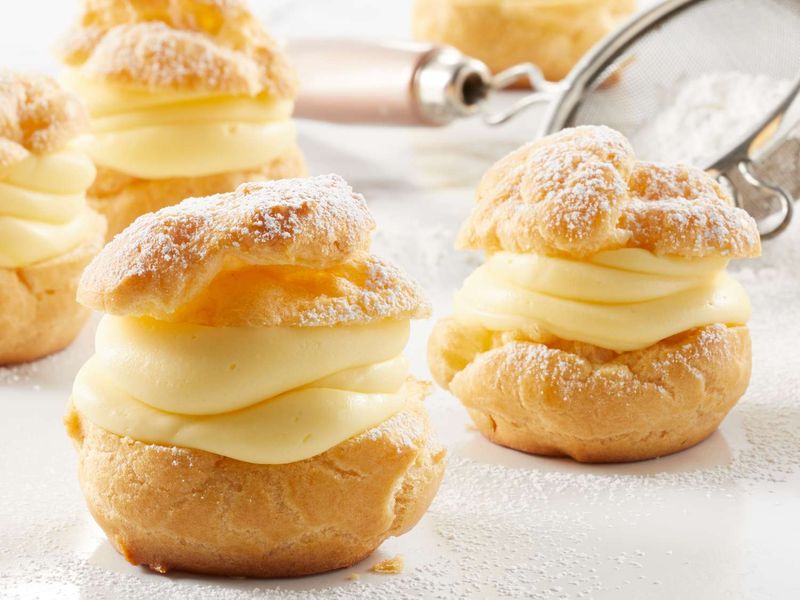
These delightful cream puffs are made from choux pastry, filled with rich vanilla cream. The contrast between the crisp pastry shell and the soft filling is pure bliss. A staple in French bakeries, choux à la crème are both elegant and comforting. They’re often dusted with powdered sugar or topped with a thin layer of icing. This classic treat celebrates the simplicity and elegance of French dessert-making.
Galette
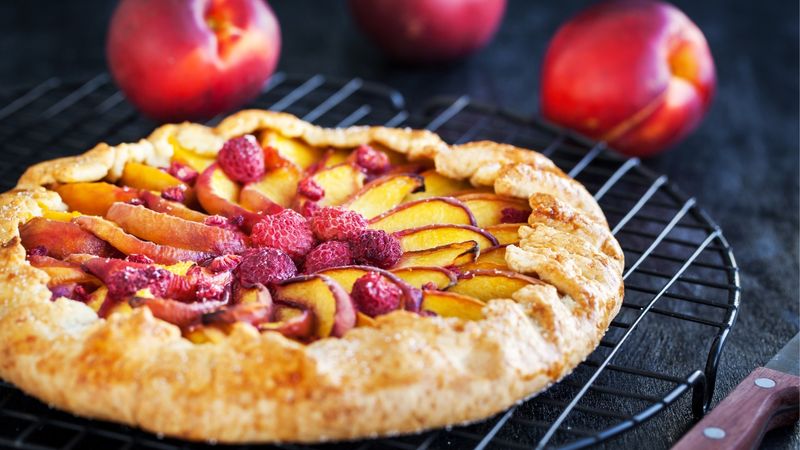
Unlike its sweet cousin, the Galette des Rois, this galette is a free-form tart with a rustic character. Filled with seasonal fruits or savory ingredients, it offers a relaxed approach to baking. The charm of a galette lies in its simplicity, allowing the ingredients to shine. Its rough edges and golden crust make it visually appealing. Perfect for showcasing fresh produce, a galette brings a touch of countryside charm to any meal.
Brioche

This buttery, soft bread is a staple in French households, known for its rich flavor and tender crumb. Brioche dough is enriched with eggs and butter, resulting in a bread that’s almost cake-like. It’s versatile, perfect for breakfast, sandwiches, or even French toast. Its golden, shiny top is characteristic, achieved by brushing with egg wash before baking. Brioche embodies the indulgence and versatility of French baking, offering warmth and comfort.
Soufflé

The soufflé, a symbol of French culinary prowess, is known for its airy texture and dramatic rise. This dish can be both savory and sweet, with chocolate being a popular choice. The key lies in whipping the egg whites to perfection, achieving a lightness that elevates the dish. Despite its reputation, a soufflé can be made with ease and offers a delightful surprise for dinner guests. It exemplifies the elegance and finesse of French cooking.
Profiterole
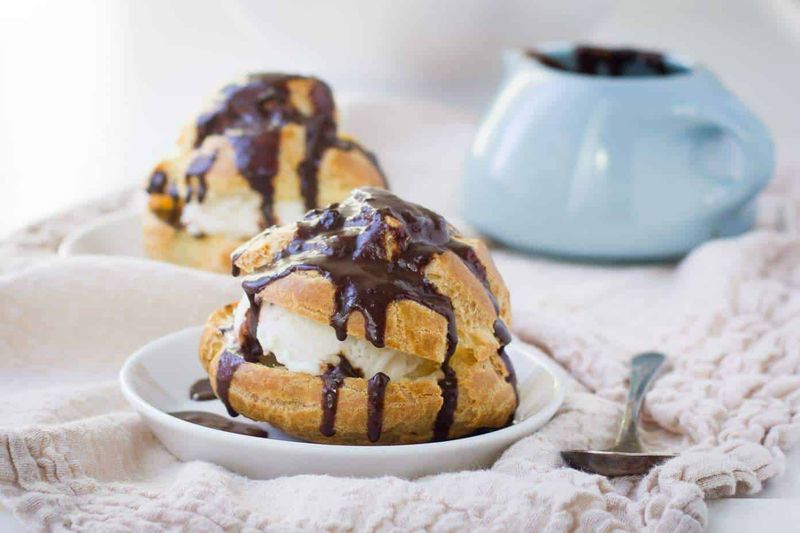
Profiteroles are a delightful treat of choux pastry filled with cream or ice cream, often topped with chocolate. Their bite-sized nature and rich flavors make them irresistible. Originally from Italy, they have become a staple of French cuisine, beloved for their versatility. Serve them stacked as a tower or individually plated. This classic dessert combines the satisfaction of pastry with the indulgence of ice cream, creating a truly luxurious experience.
Baba au Rhum
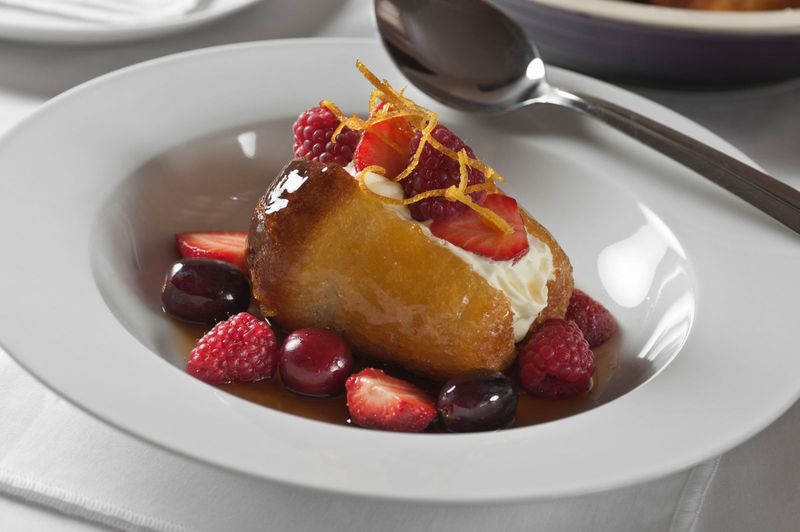
Originating from Eastern Europe, Baba au Rhum has become a cherished French dessert. It’s a small yeast cake saturated with rum syrup, offering a moist, flavorful bite. Traditionally served with whipped cream, it balances richness and sweetness perfectly. The baba’s unique texture and bold flavors make it a standout. Its cultural journey from Poland to France adds to its allure, showcasing the fusion of culinary traditions.
Leave a comment